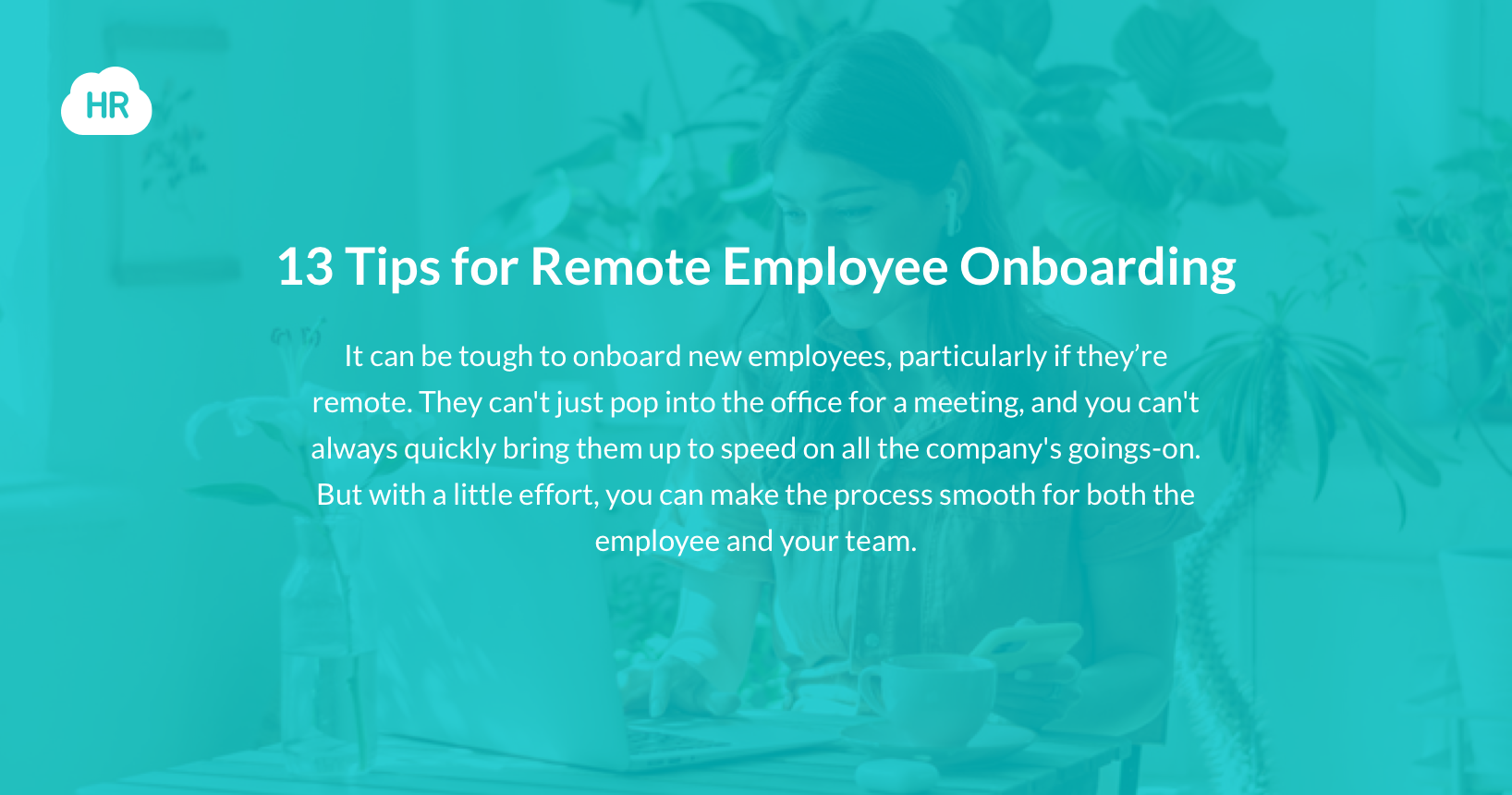- 1. Have a remote work policy
- 2. Send equipment and a welcome package beforehand
- 3. Be prepared with virtual onboarding materials
- 4. Leverage existing technology and tools
- 5. Let new hires know what to expect
- 6. Set up a dedicated onboarding space
- 7. Use self-onboarding checklists
- 8. Introduce them to the team members
- 9. Give them a virtual tour
- 10. Assign a buddy
- 11. Provide training and resources
- 12. Encourage communication and feedback
- 13. Give them room to grow


 Cut onboarding time
by 60%—here's the
Ultimate Checklist
that helped do it.
Cut onboarding time
by 60%—here's the
Ultimate Checklist
that helped do it.

Onboarding remote workers, or "onboarding remoto" as it's sometimes called, can be challenging, particularly if they're new to remote work. They can't simply pop into the office for a meeting, and you can't always quickly bring them up to speed on all the company's goings-on. But with the right remote employee onboarding strategy and these tips for onboarding remote employees, you can make the process smooth for both the employee and your team.
Several digital onboarding tools and technologies can help make the remote work onboarding process easier for you and your new employee. For example, video conferencing software like Skype or Zoom can be used for virtual employee orientation and tours. And there are many online tools, such as Google Drive, that can be used for collaboration and sharing documents.
In addition to taking advantage of these tools, you can make the onboarding process smoother and more efficient with the following guide, designed to help you get started with remote onboarding best practices.
1. Have a remote work policy
If you're going to be onboarding remote employees regularly, it's important to have a remote work policy in place. This should outline your work expectations for how employees will conduct themselves while working remotely and what you expect from them regarding communication and collaboration. Your HR policies should be clearly defined within this remote work policy.
Having a clear policy will help make the remote employee onboarding process smoother and ensure everyone is on the same page from the start.
And it starts in the hiring process: In your application, ask candidates what aspects of remote work appeal to them. Ask them to describe their preferred working style, communication style, and technical skills. If a candidate responds that they do not enjoy the isolation of remote work, you may want to move on.
2. Send equipment and a virtual welcome package beforehand
Few things will frustrate both you and your new employee more than having them spend the first few working days ironing out technical difficulties. So, ahead of time, order all necessary hardware they’ll need and have it delivered to their home. Equipment delivery and IT setup are crucial steps in how to onboard a new employee remotely.
Here are some items to consider, depending on the requirements of the position:
-
Laptop or desktop computer
-
Monitor
-
Keyboard and mouse
-
Headset or earphones
-
Webcam
-
Printer/scanner
-
External hard drive or USB drives
-
Phone or VOIP equipment
-
Charging accessories and power strips
When it comes to software, if what employees need isn’t cloud-based, ensure it's pre-installed on their device. Include passwords, usernames, and any other security information needed so remote hires can easily get up and running.
Suppose you are working on many different online marketing tools. In that case, putting together a list of recommended tools for your new employee may be helpful. Or if you’re working with a project management tool, ensure that their accounts are already set up in advance, and they’ll have access from day one.
Additionally, making remote employees feel welcome can help embed them into your organization and feel like they’re part of the team. One idea is to send a virtual welcome package or welcome kit with things like:
-
Welcome letter from the CEO or team leader
-
Company swag such as T-shirts, mugs, notebooks, or pens
-
Employee handbook
-
Snack box with an assortment of treats and snacks to enjoy while working
-
Tech accessories like USB flash drive, ergonomic mouse pads, or laptop stands
-
Gift cards for coffee or online retailers
-
Virtual event pass to an upcoming online workshop or team-building event
-
Desk plant to brighten up their home office space
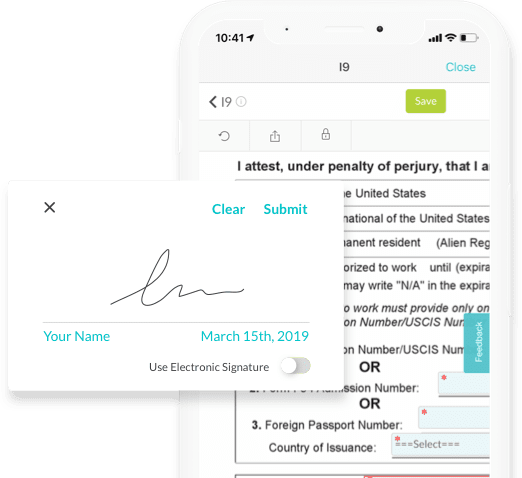
3. Be prepared with virtual onboarding materials
Gather all your onboarding materials and make digital copies as part of your remote onboarding program. You may also want to mail them a physical copy along with their welcome package. Here’s a list of things you’ll want to include in your remote onboarding checklist and onboarding calendar:
For all employees:
-
Mission, vision, and values
-
Organizational charts
-
Employee directories
-
Communication procedures (how and when to use email, video calls, and chat)
-
Tutorials for commonly used tools
-
Security standards
-
Templates for standard documents (presentations, email invitations, sales follow-up emails, etc.)
For marketing:
-
Lead qualification criteria (use lead verification tools)
-
Content style guide
-
Blog and SEO best practices
For sales:
-
CRM contact information standards
-
How to order business cards
-
Travel and expense procedures
For software developers:
-
How to set up a development environment
-
Codebase
-
Development processes
-
Architecture standards
You can help employees track their progress by making videos of everything that they need to learn in modules. Or you can set up a video call so that they’re able to ask questions on anything they don’t understand and managers can easily answer them on the spot.
Creating these learning modules might be a bit difficult, but you can contract a Professional Employer Organization (PEO) to create learning modules for any job position.
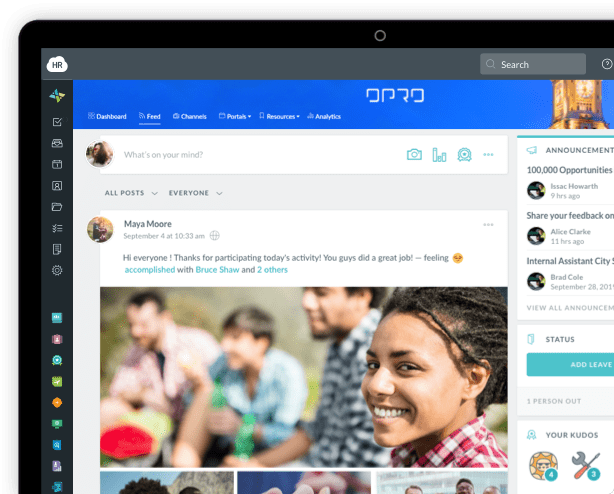
4. Leverage existing technology and tools
Use video conferencing or online team meetings to ensure a smooth transition. Companies onboarding remote employees can greatly benefit from leveraging technology and communication tools such as Zoom for virtual meetings, Slack for communication, Asana for project management, HR Cloud for HR software, and Microsoft Teams for collaboration and document sharing.
For example, you can use Microsoft Teams to welcome your new team member, outline their role responsibilities, and offer support. And some apps, such as Donut, allow employees to chat with a company representative through the internet. Onboarded employees can also receive useful information about company resources, such as knowledge bases, training software portals, and cheat sheets
5. Let new hires know what to expect
Working from home can be a brand new experience for most. Ensure everyone understands what's expected of them during the remote onboarding process. What information do they need? Whom will they be meeting with? What tools do they need to be successful? You can avoid confusion and frustration later on by getting everyone on the same page from the start.
This is also a good time to set expectations for communication. Will you use email, Slack, video conferencing, or a combination of all three? Let your new employee know how you prefer to communicate and the best way to reach you.
6. Set up a dedicated onboarding space
If possible, set up a dedicated space for their remote orientation. This gives them a place to go where they can find all the information they need in one spot. It can be as simple as a folder in your company's shared drive or an intranet page with links to all the relevant documents.
Having a dedicated space also makes it easy for you to keep track of your new employee's progress. You can quickly see what they've read and what still needs to be covered.
As your business grows, it might be a good idea to consider tools to help during this process. HR Cloud’s employee Onboard platform can help to automate a lot of the repetitive tasks that build up as you get the hang of remote onboarding.
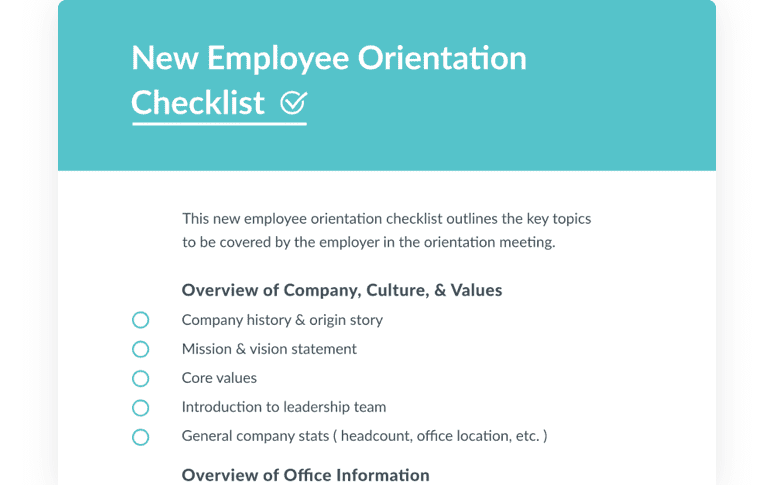
7. Use self-onboarding checklists
Self-guided remote onboarding checklists are an effective tool for streamlining the onboarding process of remote employees, ensuring they complete all necessary steps.
These checklists should include tasks like setting up company email accounts, completing required paperwork, reviewing company policies and procedures, and accessing necessary software and tools.
Additionally, the checklist can guide new hires through introductory training modules, schedule their first team meetings, and prompt them to set up virtual meet-and-greets with key team members.
8. Introduce them to the team members
One of the challenges of remote work is feeling like you're part of the team. So take some time for team introductions, even if it's just through a quick email or video call. If possible, set up regular virtual coffee chats or happy hours so they can get to know their colleagues in a more informal setting.
You can also give them the company’s organization chart so that they do not have a hard time trying to remember who is who.
9. Give them a virtual tour
If your company has a physical office, give your new employee a virtual tour so they can see where their team members work and what the space looks like. If you don't have an office, you can still give them a tour of your company's website, intranet, or social media channels as part of their company orientation.
Make them feel like they're part of the team by showing them around and introducing them to everyone they'll be working with, even if it's just virtually. Always make an effort to have your camera on to create a warm face to face feeling when giving the tour.
an Onboarding Process
how HR Cloud makes onboarding easy.
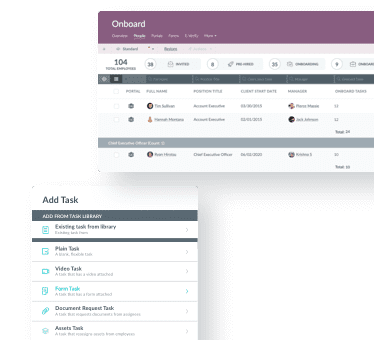
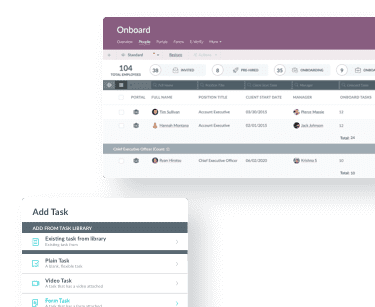
10. Assign a buddy
One way to help your new employee feel welcome and aid in remote team integration is to assign them a buddy. This should be someone who's been with the company for a while and knows the ropes. They can answer your new employee's questions and help them feel comfortable in their new role. This buddy system is an essential part of successful remote onboarding.
A workplace mentor can provide initial guidance and help eliminate the anxiety many new remote employees experience. Moreover, use video coffee chats and other activities to break the ice.
11. Provide training and resources
As part of the onboarding program, provide your new employee with all the training sessions and resources they need to be successful in their role.
An onboarding training session should entail a thorough introduction to the company culture, key policies, and job-specific skills, along with interactive elements like Q&A sessions, practical exercises, and opportunities for job shadowing with team members and key department leads.
The goal is to set them up for success by providing everything they need to hit the ground running and make sure you’re both on the same page once their onboarding schedule is complete.
12. Encourage communication and feedback
Working remotely makes it easy to feel like you're out of sight and out of mind. To avoid this, schedule regular check-ins and one-on-one meetings with your new employee. This gives you a chance to see how they're doing, answer any questions they may have, and give feedback on their progress.
You should also be open to getting feedback from your employees. This helps you figure out problems and come up with solutions. Feedback collection will show you places where your new employees have problems. There are different ways in which you can collect feedback from your new employees. You can use surveys, meetings, or performance tracking software.
Check-ins also allow your new employee to bring up any concerns or issues they may be having. By addressing these early on, you can help them feel more comfortable in their role and prevent any potential problems down the road.
You can also ask them to turn on their video during conference meetings to make them settle in properly so you become aware of their onboarding experience. Since employees are not able to meet face to face, online meetings and daily communication are essential in team building and creating healthy remote team relationships.
13. Give them room to grow
Finally, remember that your new employee is still learning and growing into their role. They may make some mistakes along the way, but that's okay. What's important is that you give them the space to learn and grow.
Encourage them to ask questions, try new things, and take risks. This will help them become even more successful in their role and feel like they're truly part of the team. Consider implementing goal setting exercises to help them visualize their growth within the company.
“As soon as we saw HR Cloud’s Onboard demo, we knew this was the perfect solution for us. We loved that it was extremely simple and powerful out of the box, but that we could customize it with advanced capabilities to make it work in our company setting.”

About Author:
This article is written by our marketing team at HR Cloud. HR Cloud is dedicated to providing powerful solutions for your HR teams and creating an exceptional employee experience. Our aim is to help your company improve employee engagement, onboarding, and to save you valuable time!
Keep Reading
The Hidden Metrics of Frontline Success: Beyond Engagement Scores
"What gets measured gets managed, but what gets measured well gets transformed." — Peter
The Complete Guide to Frontline Onboarding: From Paper Chaos to Digital Excellence
Frontline onboarding refers to the specialized process of integrating deskless workers,
From Manual to Automated: A Complete Guide to Digitizing Employee Onboarding for Large Organizations
Sarah Chen, Director of HR at a 7,000-employee healthcare organization, starts her Monday
Like What You Hear?
We'd love to chat with you more about how HR Cloud® can support your business's HR needs. Book Your Free Demo

Build a Culture of Recognition. Boost Engagement. Guaranteed.
Workmates empowers employees to stay informed, connected, and appreciated—whether they’re on the front line, in the office, or remote. Recognition drives 12x higher engagement.Trusted by industry leaders in every sector




Cut Onboarding Costs by 60%.
Take the confusion and follow-ups out of onboarding with automated workflows, digital forms, and structured portals—so new hires ramp faster 3X quicker.Trusted by industry leaders in every sector




